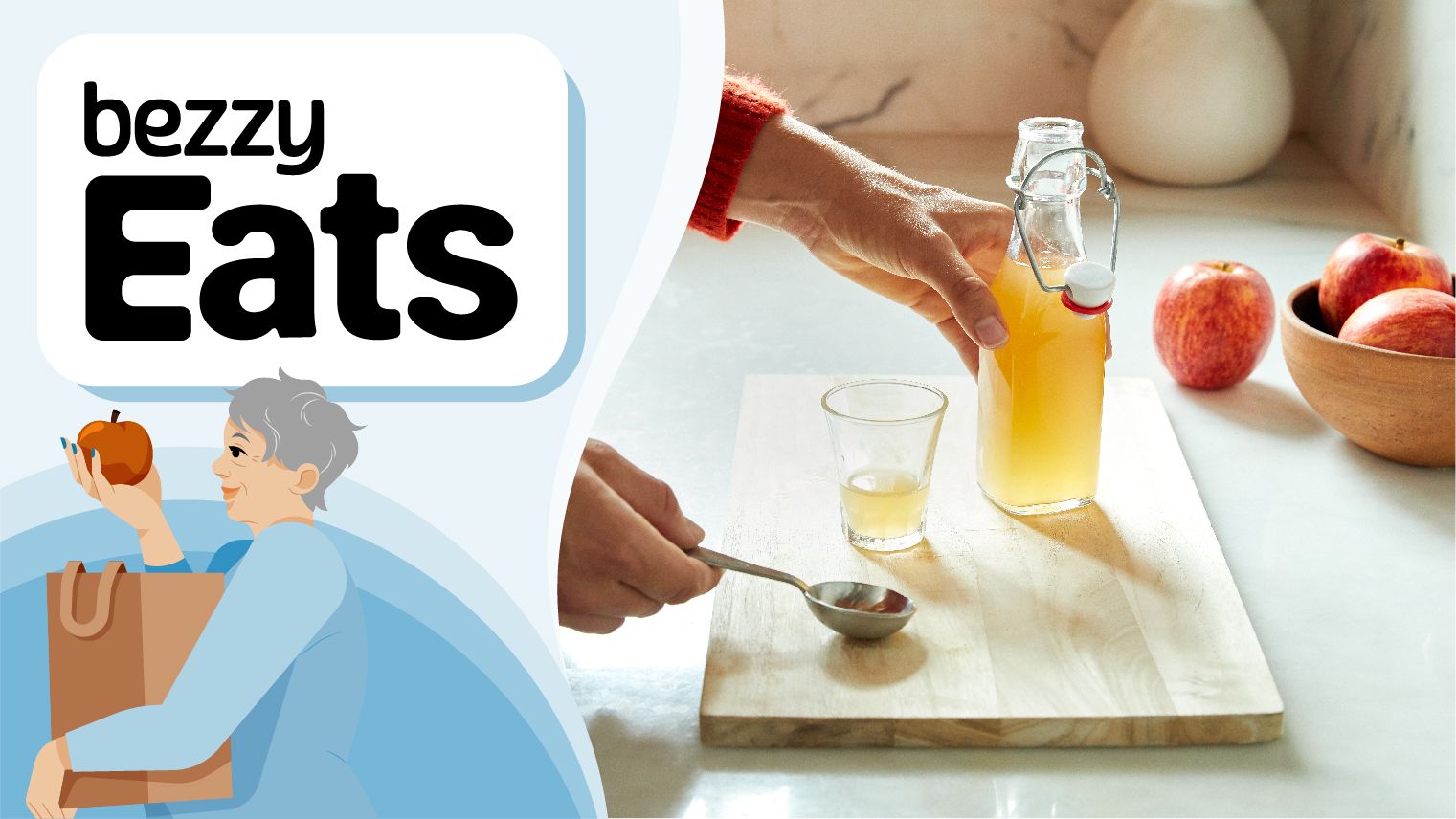10 Tangy Hacks to Lower Blood Sugar
October 31, 2023
Content created for the Bezzy community and sponsored by our partners. Learn More

A dash of vinegar or lemon juice may help you manage your blood sugar if you live with T2D. Here’s how.
You may know that vinegar and citrus juices add a depth of flavor to food, enhancing some flavors while balancing others.
What if we told you they could also change how you metabolize carbs and hit the brakes on a blood sugar spike?
Yes, adding an acidic ingredient like lemon juice to carb-rich foods can slow the conversion of starch to sugar, reducing the foods’ impact on your blood sugar.
Ingredients like apple cider vinegar, pickles (sour, not sweet), and citrus juice all contain acid and might mean the difference between your blood sugar rising out of your target and staying nicely in range.
Though acids can help reduce the impact of carbs on your blood sugar, it’s not a sign to dive into big servings of white pasta, bread, and rice.
How much an acid can lower blood sugar can vary greatly, according to different studies.


What the research shows about acid and blood sugar
Many studies on the benefits of adding acid to carb-rich meals have used acetic acid, the type found in vinegar. While this research is still preliminary, it’s promising.
Take this: A 2019 review of studies between 1995 and 2018 concludes that consuming 2–6 tablespoons of vinegar with a carb-rich meal may help improve glycemic response in the hours following the meal.
In a 2017 analysis of clinical studies, researchers found that adding vinegar to a high carb meal significantly reduced participants’ post-meal glucose and insulin levels. Researchers suggest that vinegar can help manage blood sugar and keep hyperglycemia, or high blood sugar, at bay.
What’s more, adding just 2 ounces of apple cider vinegar to a carb-rich bagel and orange juice breakfast lowered fasting glucose levels by 4% in people with type 2 diabetes (T2D), according to a 2019 review.
Even better, insulin sensitivity improved by 34% in people with insulin resistance and by 19% in folks with T2D.
But it’s not just vinegar that may press pause on a blood sugar spike.
A 2021 randomized controlled trial looked at how lemon juice affected participants’ glycemic response to bread. Researchers found that it lowered the rise in blood sugar by 30% and also delayed the spike by more than 35 minutes.
It’s worth noting that while this study included people without T2D, it still suggests lemon juice (and acids, in general) can have favorable effects on blood sugar.
More robust research is needed to nail down enough details to make specific recommendations. But it couldn’t hurt to add these otherwise healthy ingredients to your diet — especially with carb-heavy meals.
Common acidic foods and ingredients
Here are the most common acidic foods to incorporate into your diet:
Vinegar
White vinegar, apple cider vinegar, rice vinegar, and red or white wine vinegar all have one thing in common: They’re made with water and acetic acid.
Acetic acid is responsible for vinegar’s tangy flavor and potential blood sugar-lowering effects.
While balsamic vinegar is another popular option, it contains 2–7 grams of sugar per tablespoon, so check labels for carb counts.
Lemon juice
Citric acid gives citrus fruits, such as lemons, limes, and oranges, their distinctive sour taste. Lemons and limes have the highest concentration of citric acid.
Tip: With higher carb oranges and grapefruits, it’s better to eat the whole fruit to get the fiber, which can slow the absorption of sugar into your bloodstream.
Pickled and fermented foods
Both pickled and fermented foods are acidic; they just differ in the type of acid they contain.
Pickling involves marinating foods (usually veggies or fruits) in vinegar (acetic acid) and water. Popular pickled foods include:
- dill pickles
- pickled beets
- pickled onions
- pickled jalapeños
With fermented foods, the sugars in a food are converted into lactic acid. Tempeh, kimchi, and probiotic yogurt are common fermented foods.
10 easy food hacks with acids
Acidic ingredients are super versatile. They can add both brightness and health benefits to your meals.
Here are 10 tasty ways to use acidic ingredients:
- Dress your salad with a homemade mixture of lemon juice, apple cider vinegar, extra-virgin olive oil, and your favorite herbs and spices.
- Drizzle apple cider vinegar on roasted veggies, like carrots, sweet potatoes, and cauliflower.
- Pair an open-faced sandwich with a side of dill pickles or layer your sandwich with pickled onions.
- Chop pickles or other pickled veggies and toss them into a salad for added crunch and tang.
- Add a few tablespoons of apple cider vinegar to a homemade protein fruit smoothie.
- Add a few squeezes of lemon juice to tuna salad or seafood dishes.
- Use apple cider vinegar and lemon juice in meat or chicken marinades. The acids also help tenderize the protein.
- Squeeze lemon or lime juice into homemade guacamole or hummus.
- Make lemon pasta: Simmer lemon juice and lemon zest with garlic and parsley in extra-virgin olive oil. Then, mix it all together with whole grain spaghetti or fettuccine.
- Mix lemon juice and zest into cooked rice, and then add herbs like parsley or dill for a flavorful side dish.
Medically reviewed on October 31, 2023
6 Sources


Like the story? React, bookmark, or share below:
Have thoughts or suggestions about this article? Email us at article-feedback@bezzy.com.
About the author